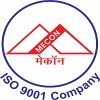Filter interviews by
RITES Site Engineer Interview Questions and Answers
RITES Site Engineer Interview Experiences
1 interview found
I applied via Company Website and was interviewed in Jun 2023. There were 3 interview rounds.

(1 Question)
- Q1. Only Document Verification
(2 Questions)
- Q1. Explain about Initial and Routine Pile Load Test
- Ans.
Initial and Routine Pile Load Tests are conducted to assess the load-bearing capacity and performance of piles.
Initial Pile Load Test is performed on a single pile to determine its ultimate load capacity and settlement behavior.
Routine Pile Load Test is conducted on a representative sample of piles to verify the design assumptions and ensure the desired performance.
Initial Pile Load Test involves applying a gradually i...
- Q2. Explain about Performance Test of Elastomeric Bearings
- Ans.
Performance test of elastomeric bearings evaluates their ability to withstand load, deformation, and environmental conditions.
Performance test assesses the load-carrying capacity of elastomeric bearings.
It measures the deformation and displacement under different loads.
Tests evaluate the behavior of bearings under various environmental conditions like temperature and moisture.
Performance tests ensure the durability, st...
Skills evaluated in this interview
Top trending discussions






Interview questions from similar companies

I applied via campus placement at Visvesvaraya National Institute of Technology (VNIT), Nagpur and was interviewed in Oct 2024. There was 1 interview round.
(3 Questions)
- Q1. Shear force and bmd
- Q2. Types of beam ,propped cantiliver beam
- Ans.
A propped cantilever beam is a type of beam that is supported at one end and has a support (prop) at some point along its length.
Propped cantilever beams have a fixed support at one end and a prop at some point along the beam's length.
The prop helps to reduce the bending moment and deflection at the free end of the beam.
These beams are commonly used in construction to support overhanging structures or balconies.
Example...
- Q3. Which beam will have highest thickness
- Ans.
The beam with the highest thickness will depend on the specific design and requirements of the structure.
The beam with the highest thickness will typically be a main load-bearing beam in the structure.
Factors such as the span of the beam, the load it needs to support, and the material used will determine the required thickness.
For example, a bridge beam supporting heavy traffic will likely have a higher thickness than
Interview Preparation Tips
- Concrete
- RCC

(2 Questions)
- Q1. Design of beam and column
- Ans.
Designing beams and columns involves determining the size, material, and layout to support the required loads.
Consider the type of structure and the loads it will bear
Calculate the required dimensions and reinforcement based on structural analysis
Select appropriate materials such as steel or concrete
Ensure proper connections and detailing for stability and safety
- Q2. Condition of limit state of servicibility
- Ans.
Limit state of serviceability refers to the condition where a structure is still functioning properly without any excessive deflection or deformation.
Limit state of serviceability ensures that a structure remains usable and safe for occupants.
It involves checking factors like deflection, vibration, cracking, and durability.
For example, a bridge should not deflect excessively under the weight of traffic to maintain serv...

(2 Questions)
- Q1. About u r self
- Q2. What is cement and explain about it
- Ans.
Cement is a binding material used in construction to hold together bricks, stones, and other materials.
Cement is a fine powder made from limestone, clay, and other minerals.
When mixed with water, cement forms a paste that hardens and binds materials together.
Common types of cement include Portland cement, which is used in most construction projects.
Cement is a key ingredient in concrete, mortar, and grout.
Proper curing...

I applied via Walk-in and was interviewed before May 2021. There were 2 interview rounds.

(2 Questions)
- Q1. DAISCUSS ABOUT TECHNICAL ASPECTS OF CIVIL ENGINEERING AND SOFTWARE SKILLS
- Q2. CODAL PROVISION OF CONCRETE AND COMMANDS OF SOFTWARE
- Ans.
CODAL provisions for concrete refer to the guidelines and regulations set by relevant authorities, while commands of software are the specific instructions or functions within a software program.
CODAL provisions for concrete include specifications for mix design, strength requirements, and durability standards.
Commands of software for site engineers may include functions for structural analysis, quantity takeoff, and p...
Interview Preparation Tips

(2 Questions)
- Q1. Size of concrete cube
- Ans.
The size of a concrete cube is typically 150mm x 150mm x 150mm for standard testing purposes.
Standard size for concrete cube is 150mm x 150mm x 150mm
Used for testing the compressive strength of concrete
Other sizes may be used for specific projects or requirements
- Q2. 150mm*150mm*150mm

Site Engineer Interview Questions & Answers
Hindustan Construction Companyposted on 20 Dec 2023
(1 Question)
- Q1. What is the density of RCC structure
- Ans.
The density of RCC structure typically ranges from 2200 to 2500 kg/m^3.
Density of RCC is influenced by the type and proportion of materials used.
Common density range for RCC is 2200 to 2500 kg/m^3.
Higher density indicates stronger and more durable RCC structure.

Site Engineer Interview Questions & Answers
National Projects Construction Corporationposted on 9 Aug 2023
I was interviewed in Feb 2023.

(2 Questions)
- Q1. Document verification
- Q2. Previous work experience
(3 Questions)
- Q1. What is FAR, floor area, carpet area,built-up area?
- Ans.
FAR stands for Floor Area Ratio, which is the ratio of a building's total floor area to the size of the piece of land on which it is built. Floor area refers to the total area of a floor in a building, carpet area is the area within the walls, and built-up area includes carpet area plus the thickness of walls.
FAR (Floor Area Ratio) is the ratio of a building's total floor area to the size of the land it is built on.
Flo...
- Q2. Billing experience & deduction & procedure
- Q3. Concrete, som, design

I applied via Walk-in and was interviewed in Aug 2023. There was 1 interview round.
(1 Question)
- Q1. Execution and Quality Related Questions

I applied via Naukri.com and was interviewed in Nov 2022. There were 2 interview rounds.

(3 Questions)
- Q1. Please send me a date and time a interview one-on-one round
- Q2. All questions are site engineer types
- Q3. Piping and equipment erection and planning
RITES Interview FAQs
Tell us how to improve this page.
RITES Interviews By Designations
- RITES Assistant Manager Interview Questions
- RITES Inspection Engineer Interview Questions
- RITES Deputy General Manager Interview Questions
- RITES Loco Pilot Interview Questions
- RITES Assistant Manager Civil Interview Questions
- RITES Civil Engineer Interview Questions
- RITES Computer Operator Interview Questions
- RITES Electrical Engineer Interview Questions
- Show more
RITES Site Engineer Interview Process
based on 1 interview
Interview experience
Site Engineer Interview Questions from Similar Companies
Fast track your campus placements
RITES Site Engineer Reviews and Ratings
based on 4 reviews
Rating in categories
|
Civil Engineer
139
salaries
| ₹2 L/yr - ₹9.9 L/yr |
|
Mechanical Engineer
104
salaries
| ₹3.4 L/yr - ₹6 L/yr |
|
Assistant Manager
101
salaries
| ₹5 L/yr - ₹18.5 L/yr |
|
Engineer
92
salaries
| ₹3 L/yr - ₹8.5 L/yr |
|
Inspection Engineer
84
salaries
| ₹3.3 L/yr - ₹7.2 L/yr |

Ircon International

Mecon

BHEL

Container Corporation of India
- Home >
- Interviews >
- RITES Interview Questions >
- RITES Site Engineer Interview Questions










